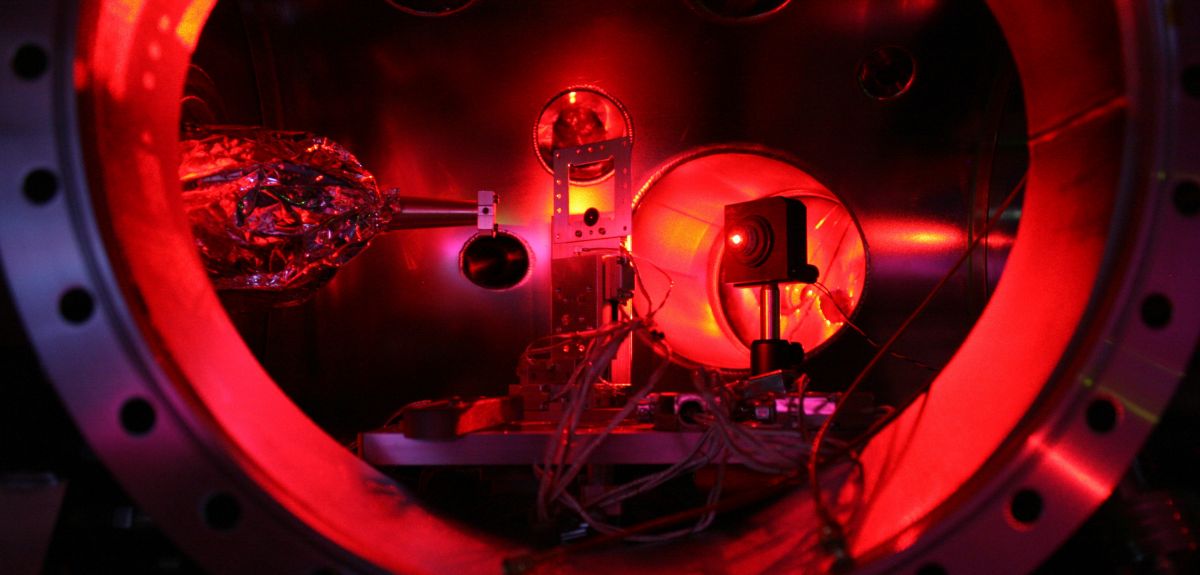
Image courtesy of Sam Vinko
Recreating stellar conditions on Earth
By recreating the extreme conditions similar to those found half-way into the Sun in a thin metal foil, Oxford University researchers have captured crucial information about how electrons and ions interact in a unique state of matter: hot, dense plasma. Their snapshot of the fraction of a trillionth of a second during which these extreme conditions existed during the experiment found that previous theoretical models used to inform how quickly atoms ionize and heat up in a dense plasma were off by a factor of three.
I caught up with Dr Sam Vinko, the lead researcher of the study published in Nature Communications, and I talked to him about how to recreate stellar conditions in a lab in California.
OxfordSciBlog: Your study investigates conditions during a plasma; what is this state, and why is it important to look at it?
Sam Vinko: A plasma is a collection of electrically charged particles: a flame is a common example, but plasmas are ubiquitous – they are the most common state of matter in the visible Universe. For example, our Sun in made of plasma, a soup of electrons and ions at high temperatures and densities.
Using intense X-rays, we've been looking at how to recreate extreme states of matter, conditions similar to those found half-way towards the centre of the Sun, in a lab. We managed to create a plasma at a density typical of a solid, but heated to several million degrees centigrade.
We're interested in these sort of extreme states of matter for many reasons; they are important to understand how matter behaves in the cores of large planets, various types of stars and other astrophysical phenomena, in intense laser-matter interactions, and also for inertial confinement fusion (ICF) research.
Inertial confinement fusion is a process where hydrogen isotopes are merged together to create helium, a neutron and quite a bit of energy, in a way similar to what happens in the core of stars. It's a potentially very promising source of energy for the future, but we still need a better understanding of the physics of matter in extreme conditions to get it to work controllably in a lab.
OSB: How did you create this hot, dense plasma?
SV: We created this plasma state by exposing a very thin sheet of aluminium foil to X-ray laser pulses produced by the Linac Coherent Light Source (LCLS) in Stanford, California. This is the most powerful X-ray source every made, and the X-rays are focused on a spot 30 times smaller than the width of a human hair. The end result is of course a hole in the foil, as the ions quickly heat up and the foil explodes.
But atoms and ions have some, albeit small, mass. Because of this mass, they have some inertia. And this inertia means that it takes some amount of time for the ions to move and for the material to actually explode. The trick here is that if you can do all your physics before this explosion happens, you’ve got what is called 'inertial confinement': the plasma is being held together by the inertia of its constituent atoms and ions.
So we created a hot and dense plasma by taking advantage of this inertial confinement: we dumped a large amount of energy very, very quickly onto a solid target, in the fraction of the trillionth of a second, before the material has had a chance to explode. This is the point where we take all our measurements: before the material blows up.
OSB: How long did you experiment last then?
SV: Our entire experiment is over in about 50 femtoseconds (a femtosecond is a quadrillionth of a second). This is an unimaginably short amount of time, but to give you a sense of how short it is: there are more femtoseconds in a single minute than there have been minutes since the beginning of the Universe!
OSB: What do you measure during this short time?
SV: We do spectroscopy: we record and then analyse the light emitted during the experiment to find clues about the underlying processes. One key problem is how to limit this analysis only to the radiation that is emitted in the first 50 femtoseconds of the experiment.
The trick we use to get around this problem takes advantage of the fact that the inner-most electrons orbiting the nucleus remain tightly bound, even in the hot plasma conditions we create. They are only knocked lose by the high-energy X-rays we use. So the 'fingerprints' of these innermost electrons are only visible when the X-ray beam is on, which in turn allows us to observe the sort of extreme conditions you’d find ordinarily only inside stars.
We analysed these spectral 'fingerprints' to track a specific property that we were interested in: collisional ionization.
OSB: What is collisional ionization?
SV: Electrons which have been knocked out of their orbits (e.g., by the high-intensity X-ray pulse that we used) collide with other electrons inside atoms and ions, in turn knocking them out from their orbits: this is known as (electron) collisional ionization.
The rate at which collisional ionization takes place in a material is very dependent on its density: if you have a gas, it's more likely that a free electron will just fly off without bumping into anything else. In a more dense material, it's more likely to bump into another electron.
But the rate at which this collisional ionization happens has never been measured in a dense plasma before, in part because it is so very quick – on average it takes place in less than a femtosecond!
OSB: Why is it important to measure these rates?
SV: Collisional rates are essential to model and understand how a dense plasma (such as that found in an astrophysical object or in an inertial confinement fusion experiment) is created, and how it heats, ionizes and equilibrates.
These collisional ionization rates have previously been either calculated from theory or extrapolated from measurements in very diluted systems, but have never been measured directly in a dense system. We’ve now found a way to measure these rates for a hot, dense plasma.
OSB: What did you find?
SV: Firstly, we've shown that it is possible to measure very, very short-lived events, by tracking them with respect to other short-lived events that have a clear 'fingerprint'. The trick was to use Auger decay (a very fast process where electrons inside an atom or ion are reshuffled to fill a hole in a deep state) as an ultra-fast clock to time a collisional event in a single ion – a process that takes on average less than a million-billionth (quadrillionth) of a second to happen.
By measuring these ultra-fast events, we've found that the collisional rates are actually much higher than had been assumed previously: it’s not a small amount either, since the rates we find are more than three times faster. So the ionization process seems to be a lot more efficient than people had thought previously.
We're hoping that this is the first of many experiments aimed at replacing untested models with quantitative, experimentally measured values. The fact that current models don't quite work in many conditions isn't really a surprise, given their reliance on extrapolations and unverified assumptions. Excitingly, we now have a method that can provide the experimental data to plug in the gaps.
A report of the research, entitled 'Investigation of femtosecond collisional ionization rates in a solid-density aluminium plasma', is published in Nature Communications.
 Peter Medawar at Oxford: the path to a Nobel Prize
Peter Medawar at Oxford: the path to a Nobel Prize Lizards quickly adapt to chilly English climate
Lizards quickly adapt to chilly English climate 8 things about Oxford’s driverless tech
8 things about Oxford’s driverless tech A song of fire and ice in the ocean
A song of fire and ice in the ocean Bubble research rises to the top
Bubble research rises to the top